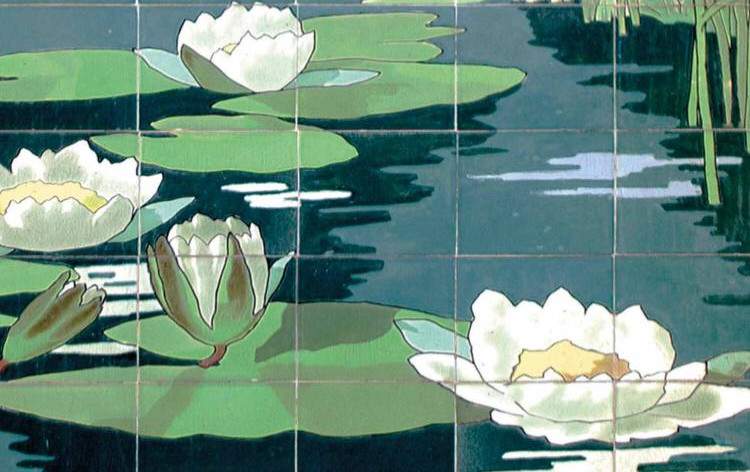From October 9, 2021 to January 30, 2022, the spaces of theCivic Aquarium of Milan will host an installation entitled The Aquarium and Water Lilies on the occasion of the exhibition dedicated to Monet at Palazzo Reale until January 30, 2022. From Nature to Monet’s Art, dedicated to the world of nature and Claude Monet’s most famous subject: the Water Lilies. The initiative promoted by the Milan Civic Aquarium, the Milan Museum of Natural History and the City of Milan_Culture, produced and organized by Arthemisia is curated by Nicoletta Ancona, Mami Azuma, Gabriele Galasso and Elisabetta Polezzo.
It is a collateral event to the exhibition Monet. From the Musèe Marmottan Monet in Paris: the visitor is immersed in a dreamlike, light space with soft colors like those of water lilies. The Milan Civic Aquarium has early 20th-century Art Nouveau exterior facades with large ceramic tile coverings that reproduce themes and subjects from the aquatic world: fish, floral motifs, aquatic plants and especially water lilies. Asian lotus flower, Small yellow water lily, White water lily, Blue lotus flower or blue water lily, Sulphur water lily: plants reproduced on the large tiles decorating its exterior walls produced by the Richard Ginori Ceramic Company.
Starting with Monet’s reproductions at the Royal Palace, a journey is made into the artistic representation of a wide variety of water lilies. The in-depth scientific study focuses on the description of the morphological structures of adaptation of these plants to the aquatic environment, in addition to the botanical records of the species reproduced by Richard Ginori.
Admired and the subject of various symbologies, the water lily has always fascinated and continues to fascinate many artists; its unchanged forms have crossed different cultures over the centuries: traces of this splendid aquatic flower can be found as early as the artistic production of Ancient Egypt, which was familiar with its cultivation. The white and blue water lily appears in many Egyptian frescoes, bas-reliefs and plastic art, and its form also lends itself to the use of fine objects of everyday life. In Greco-Roman antiquity the flower is little remembered although there is no shortage of mention of it particularly in Pliny the Elder’s Naturalis Historia. Even in medieval herbaria the waterlily is not particularly mentioned, but it knows great popularity in non-Western cultures, such as the Maya civilization. Among these peoples, the iconographic theme of the Jaguar Water Lily is very common, which perhaps owes part of this strange association to the fact that it is a feline that lives on the banks of waterways and belongs to both the terrestrial and aquatic worlds, like the water lily that sinks its roots into the earth while the corolla stands on the surface of the water.
The theme of the water lily is also very common in Japan’s ukiyo-e or floating world image, a genre of Japanese art print on paper imprinted on wooden blocks. In the mid-nineteenth century, Europe became acquainted with this genre of art and fell deeply in love with it, giving rise to what is known as Japonism. The themes dear to the great Japanese artists are studied and reproduced by the most famous painters of the time such as Van Gogh, Monet, Manet, Degas and many others. Monet in particular was fascinated by the idea of the Japanese garden, which he decided to recreate in his home in Giverny, creating a pond in which to grow various exotic plants, but especially water lilies, which he reproduced obsessively in the last decades of his life.
Its symbolic meaning should also be remembered: the water lily grows in water, and only the rhizomes and roots are immersed in the muddy soil of the pond bottoms. A beauty that is born from the mud, without being stained by it but drawing strength from it; it thus represents purity that is not contaminated by the evil of the world. A purity that can be read as a symbol of chastity and unrequited love.
For info: www.acquariodimilano.it
 |
| At the Milan Aquarium, an installation dedicated to water lilies, a subject dear to Monet |
Warning: the translation into English of the original Italian article was created using automatic tools. We undertake to review all articles, but we do not guarantee the total absence of inaccuracies in the translation due to the program. You can find the original by clicking on the ITA button. If you find any mistake,please contact us.